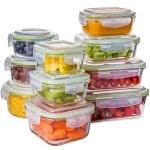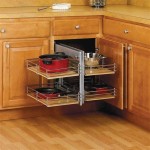The Benefits of Stainless Steel Food Storage Containers With Lids
In the modern kitchen, food storage containers are indispensable tools for preserving freshness, organizing pantries, and facilitating meal preparation. Among the various materials available, stainless steel has emerged as a prominent choice for food storage containers with lids, offering a multitude of advantages over plastic and glass alternatives. This article explores the key benefits of utilizing stainless steel food storage containers with lids, highlighting their durability, safety, and environmental friendliness.
Durability and Longevity
One of the primary benefits of stainless steel food storage containers with lids is their inherent durability. Stainless steel is a robust alloy composed primarily of iron, chromium, and other elements. Chromium provides the material with exceptional resistance to corrosion, rust, and stains, ensuring a long lifespan even with frequent use and exposure to various food types. Unlike plastic containers, which can become brittle, crack, or warp over time, stainless steel maintains its structural integrity. This durability translates to a reduced need for replacement, making stainless steel containers a more economical choice in the long run.
Furthermore, stainless steel is resistant to scratching and denting. Plastic containers are easily scratched, which can create crevices where bacteria can accumulate. Glass containers, while non-porous, are susceptible to shattering when dropped. Stainless steel offers a superior balance between hygiene and durability, making it a more reliable choice for demanding kitchen environments. The lids, typically made of stainless steel or BPA-free plastic, are also designed for repeated use and can withstand the rigors of daily handling.
The robust nature of stainless steel food storage containers makes them suitable for various applications beyond simple food storage. They can be used for transporting meals, packing lunches, and even storing non-food items like art supplies or office materials. Their resistance to extreme temperatures also allows them to be safely used in the freezer, refrigerator, and oven (without the lid, unless specifically specified by the manufacturer), expanding their versatility and functionality.
Safety and Hygiene
Food safety is a paramount concern for consumers, and stainless steel food storage containers with lids offer a superior level of safety compared to plastic alternatives. Stainless steel is a non-reactive material, meaning it does not leach harmful chemicals into food, even when exposed to acidic or hot contents. This contrasts with some plastics, which can release potentially harmful substances like bisphenol A (BPA) or phthalates into food, particularly when heated. Such chemicals have been linked to various health concerns, prompting consumers to seek safer alternatives.
The non-porous surface of stainless steel also contributes to its hygienic properties. Unlike plastic, which can harbor bacteria and odors in its microscopic pores, stainless steel provides a smooth, easily cleanable surface. This makes it less susceptible to bacterial growth and reduces the risk of foodborne illnesses. The smooth surface also prevents the absorption of odors and flavors, ensuring that food stored in stainless steel containers retains its original taste and aroma.
Stainless steel food storage containers are typically easy to clean and sanitize. They can be easily washed in the dishwasher or by hand with soap and water. Their resistance to staining also means that they maintain their appearance even after storing foods with strong colors or pigments. The hygienic properties of stainless steel make it a preferred choice for storing food for children, individuals with allergies, and anyone concerned about food safety.
The absence of BPA and other potentially harmful chemicals in stainless steel food storage containers ensures that food remains safe and uncontaminated. This is particularly important for long-term food storage and for storing foods that are consumed directly from the container. The inert nature of stainless steel also makes it suitable for storing a wide range of food types, including acidic foods like tomatoes and citrus fruits, without the risk of corrosion or chemical leaching.
Environmental Friendliness and Sustainability
In an era of growing environmental awareness, the sustainability of products is an increasingly important consideration. Stainless steel food storage containers with lids offer a more environmentally friendly alternative to plastic containers, which contribute significantly to plastic waste. Stainless steel is a highly recyclable material, and its long lifespan reduces the need for frequent replacements, minimizing waste generation. The environmental impact of stainless steel production is also generally lower than that of plastic production, considering the energy consumption and the use of non-renewable resources.
The durability of stainless steel containers contributes to their sustainability by reducing the need for disposable plastic containers. By using stainless steel containers for food storage and transport, individuals can significantly reduce their reliance on single-use plastic bags and containers, which often end up in landfills or contribute to plastic pollution. This shift towards reusable containers helps to conserve resources and reduce the environmental burden associated with plastic waste.
The recyclability of stainless steel ensures that the material can be repurposed at the end of its lifespan, further reducing its environmental impact. Recycling stainless steel requires less energy than producing virgin stainless steel, conserving resources and reducing greenhouse gas emissions. The high value of scrap stainless steel also incentivizes recycling, ensuring that a significant percentage of stainless steel products are recycled rather than discarded.
In addition to their recyclability, stainless steel food storage containers can also be reused for a variety of purposes beyond food storage. They can be used for organizing household items, storing craft supplies, or even as planters for small plants. This versatility extends their lifespan and reduces the need for purchasing new containers, further minimizing waste. The long-term cost-effectiveness and environmental benefits of stainless steel food storage containers make them a responsible and sustainable choice for consumers.
Choosing stainless steel food storage containers with lids is a conscious decision to reduce reliance on plastic and embrace a more sustainable lifestyle. This choice aligns with the growing movement towards eco-friendly products and practices, helping to protect the environment for future generations. The combination of durability, safety, and sustainability makes stainless steel containers a clear winner in the realm of food storage solutions.

Weesprout Stainless Steel Food Storage Containers Leakproof Silicone Lids Bpa Free Set Of 3 Com

Stainless Steel Food Storage Containers Advantages And Disadvantages

Life Without Plastic Review Stainless Steel Lunch Containers

Stainless Steel Food Containers Guide Benefits Grades Care Tips

14 Best Food Storage Containers The Strategist

5 Best Stainless Steel Lunch Boxes Food Containers

Benefits Of Stainless Steel Tiffin Box Pexpo

How To Select Food Storage Containers Based On Material Glass Plastic Or Stainless Steel

Which Tupperware Containers Preserve Food Best

Children Logo Customized Storage Wooden Food Container Bento Metal Bamboo 304 Stainless Steel Lunch Box With Lid For Kids And Ng Made In China Com
Related Posts








